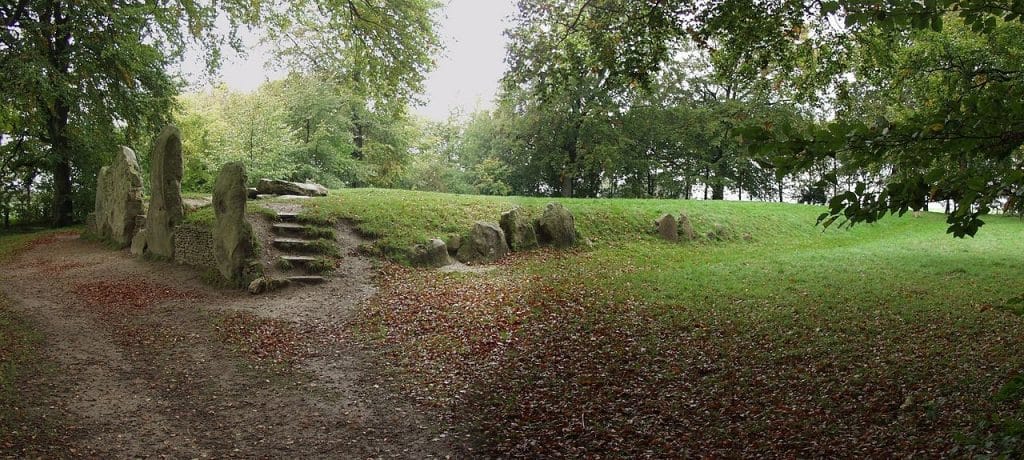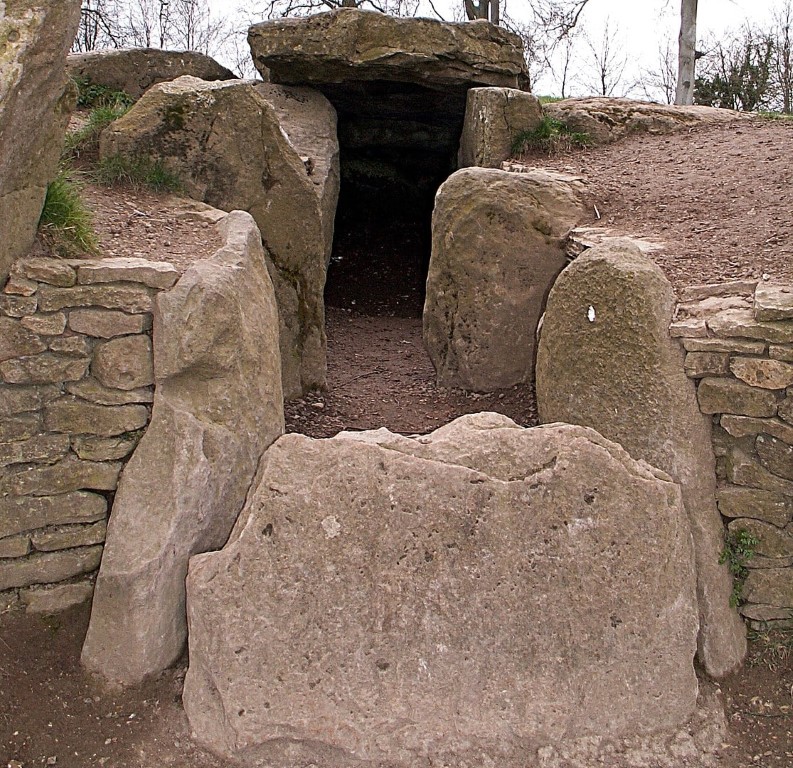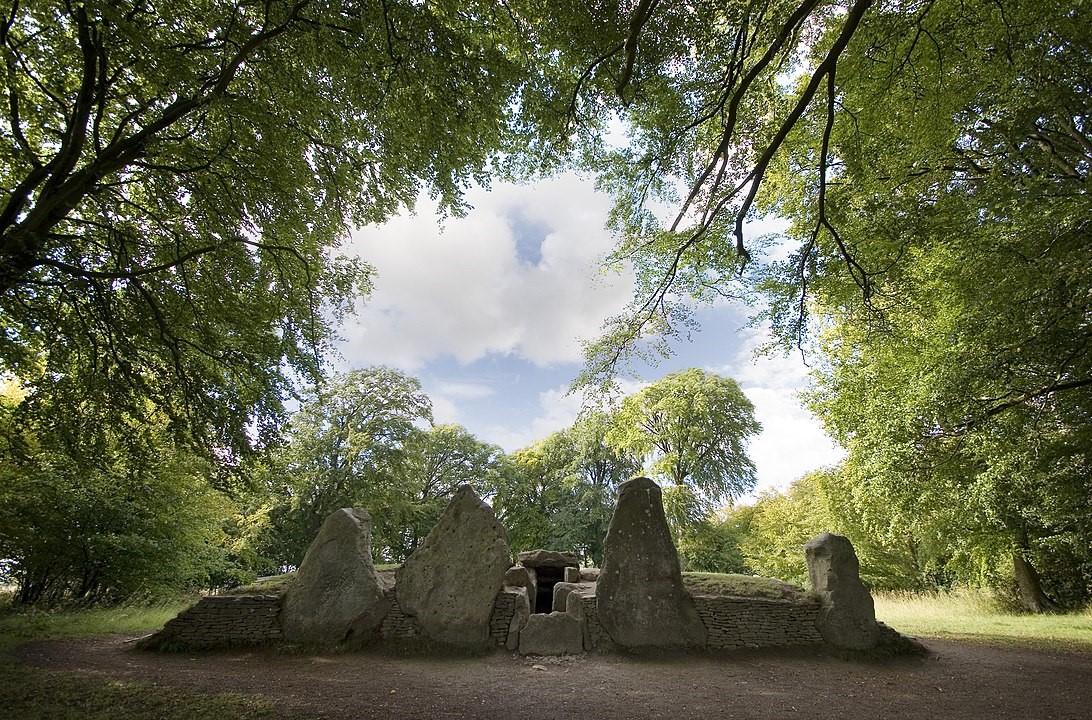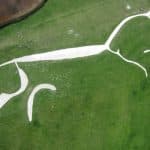Last Updated on 18/04/2023 by Alex Hamlyn
Table of Contents
Where is Weyland’s Smithy Long Barrow?
The British Isles, with their millennia of diverse history, have been shaped by various groups of ancient peoples. From the arrival of the first modern humans around 30,000 years ago to the Celts, Romans, Anglo-Saxons, and Vikings, each civilisation has left its indelible mark on the landscape. The archaeological treasures found across the UK offer an insight into the lives, beliefs, and practices of these ancient cultures.
Exploring Ancient Sites in the British Isles
The British Isles boast a plethora of ancient sites that bear witness to the ingenuity and resourcefulness of their builders. From the world-famous Stonehenge to lesser-known sites like the Ring of Brodgar in Scotland, these monuments have much to teach us about their creators.
The similarities and differences between these sites and others around the world provide a fascinating comparison. For example, the alignment of some British megalithic structures with celestial bodies mirrors that of the pyramids in Egypt or the temples of the Maya in Central America. Meanwhile, the variation in burial practices and stone construction techniques showcases the unique attributes of each culture.
Introducing Weyland’s Smithy
Nestled within the rolling hills of Oxfordshire, England, Weyland’s Smithy is a lesser-known but equally captivating ancient site. It is situated near the iconic Ridgeway National Trail, just a stone’s throw away from other historical landmarks like the Uffington White Horse and Wayland’s Ash.
The term ‘smithy’ typically refers to a blacksmith’s workshop, where metal is forged and shaped into various items. However, in the context of Weyland’s Smithy, the name is a product of local folklore rather than an accurate description of the site’s function.
The monument is not a blacksmith’s workshop, but instead, a Neolithic chambered long barrow, which primarily served as a communal burial chamber.
A long barrow is a type of prehistoric monument characterized by an elongated earthen mound, also known as a tumulus. These structures were constructed during the Neolithic period (circa 4000-2500 BCE) across various regions of the British Isles and Europe. Weyland’s Smithy is a particularly well-preserved example of this type of monument.
Weyland’s Smithy: A Noteworthy Neolithic Marvel
The structure consists of a trapezoidal earthen mound, measuring about 56 metres in length and 12 metres in width at its widest point. The mound is edged with a dry-stone wall, which helps to maintain its shape. The entrance of the long barrow is marked by two large sarsen stones, which lead into a narrow passage flanked by smaller stones. This passage ultimately opens into a central chamber, built from seven carefully arranged stones.
Within this central chamber, the remains of at least 14 individuals were discovered, indicating that the primary function of Weyland’s Smithy was as a burial site for the Neolithic community. However, beyond this funerary use, the specific purpose of the monument remains a subject of debate and speculation among archaeologists and historians.
Though not as grand as Stonehenge or Avebury, Weyland’s Smithy holds a special place among the ancient sites of Britain. Its distinctive design and well-preserved condition make it an invaluable source of information about Neolithic burial practices and architectural techniques.

Who Built Weyland’s Smithy and Why?
The construction of Weyland’s Smithy can be divided into two distinct phases, with each phase reflecting the architectural style and techniques of the Neolithic people who built it. The identity of the builders is not known precisely, but they were likely members of local Neolithic communities.
The first phase, dating to around 3,590 BCE, consisted of a timber box with a stone facade. The second phase, around 3,460 BCE, involved the enlargement of the mound and the addition of a new stone chamber.
The construction of Weyland’s Smithy can be divided into two distinct phases, with each phase reflecting the architectural style and techniques of the Neolithic people who built it.
Phase 1 (circa 3,590 BCE):
The first phase of construction involved the creation of a timber box with a stone facade. This box was approximately 20 metres long and served as the original burial chamber. The remains of this early structure have been identified beneath the later mound, which was added during the second phase of construction.
Phase 2 (circa 3,460 BCE):
The second phase of construction involved a significant expansion of the monument. The original timber box was encased within a much larger trapezoidal mound, which measured around 56 metres in length. A new stone chamber was built at the eastern end of the mound, accessed through a narrow passage flanked by sarsen stones.
The large sarsen stones used in the construction of Weyland’s Smithy were most likely sourced from the local area. The builders would have transported these massive stones using primitive tools and methods, such as wooden sledges or rollers. The exact techniques used to lift and position these stones remain a subject of speculation, but they demonstrate the Neolithic builders’ impressive knowledge of engineering principles.
Weyland’s Smithy shares some similarities with other Neolithic chambered long barrows found across the British Isles. The use of large sarsen stones and dry-stone wall construction can also be seen in monuments like West Kennet Long Barrow in Wiltshire and Coldrum Long Barrow in Kent. These similarities suggest that the builders of these monuments shared a common architectural tradition and had a similar understanding of construction techniques.
Typicaly, each long barrow is unique in its design and layout. The specific characteristics of Weyland’s Smithy, such as its trapezoidal shape and distinctive stone chamber, set it apart from other Neolithic monuments in the UK. This variation in design reflects the diversity of Neolithic communities and their specific cultural practices.
Tracing Weyland’s Smithy’s First Historical Mention
The first known reference to Weyland’s Smithy can be found in the writings of 17th-century antiquarian John Aubrey. In his work ‘Monumenta Britannica‘, Aubrey offers a detailed account of the monument, referring to it as “Wayland-Smith’s Cave.”
The site was also mentioned in 1738 by Francis Wise who recorded local folklore befitting a smith. As the tale goes, a traveller whose horse had lost a shoe could leave his horse and some money at the smith. Upon returning he would find the money gone, and the horse re-shod.
(More than likely he would return to find them both gone, but such is the nature of folklore.)
Anna Stukeley also recorded mention of the site in a letter to her father in October 1758, and the novel Kenilworth, written in 1821 by Walter Scott, refers to the site as ‘Weyland Smith’s Forge’.

Unique Finds and Legends
While no extraordinary artefacts have been uncovered at Weyland’s Smithy, the site’s connection to ancient legends adds an intriguing layer to its history.
According to folklore, the name ‘Weyland’s Smithy’ is derived from Wayland, a mythical blacksmith from Germanic and Norse mythology. The legend claims that the site was his workshop, where he forged magical weapons and artefacts for the gods.
Delving Deeper: Unanswered Questions
Despite extensive research and archaeological excavations, there are still many unanswered questions surrounding Weyland’s Smithy. For instance, the purpose of the site beyond its use as a burial chamber remains unclear. Some theories suggest it may have been a ceremonial or ritual centre, but concrete evidence is lacking.
Furthermore, the specific construction techniques employed by the Neolithic builders continue to puzzle experts. The manner in which they transported the large sarsen stones to the site and arranged them with such precision demonstrates an impressive understanding of engineering principles.
Sources of Inspiration and Information
For those interested in learning more about Weyland’s Smithy and its intriguing history, a variety of reputable sources are available:
- Historic England – The official website of the UK government’s heritage protection body offers a wealth of information about Weyland’s Smithy, including its history, archaeological findings, and visitor information. (historicengland.org.uk)
- The Guardian – This respected British newspaper has published several articles exploring Weyland’s Smithy and its connection to ancient legends. (theguardian.com)
- English Heritage – As the caretakers of Weyland’s Smithy, English Heritage provides in-depth information about the site and its ongoing conservation efforts. (english-heritage.org.uk)
A Journey Through Time at Weyland’s Smithy
Weyland’s Smithy, with its captivating history and connection to ancient legends, invites us to embark on a journey through time. As we explore this remarkable site, we are reminded of the ingenuity and resourcefulness of our ancestors, whose legacy continues to shape the landscape of the British Isles. By piecing together the clues they left behind, we gain a deeper understanding of the past and the people who forged it.
Whether you’re an archaeology enthusiast or simply curious about the mysteries of the ancient world, a visit to Weyland’s Smithy offers a unique and unforgettable experience. So, don your walking boots, grab a map, and set off on an adventure that will transport you back in time to the Neolithic age.
Image credits
- Weyland Smithy Long Barrow By Msemmett – Own work, CC BY-SA 3.0, https://commons.wikimedia.org/w/index.php?curid=35133225
- Side view of Weyland Smithy By TristramBrelstaff – Own work, CC BY-SA 3.0, https://commons.wikimedia.org/w/index.php?curid=16958070
- Restored Entrance to Weyland Smithy CC BY-SA 3.0, https://commons.wikimedia.org/w/index.php?curid=127880
References
- https://www.english-heritage.org.uk/visit/places/waylands-smithy/
- https://www.english-heritage.org.uk/visit/places/waylands-smithy/history/
- https://en.wikipedia.org/wiki/Wayland%27s_Smithy
- https://www.britainexpress.com/attractions.htm?attraction=44
- https://thirdeyetraveller.com/waylands-smithy-chamber-tolkien/
- http://www.stone-circles.org.uk/stone/wayland.htm


